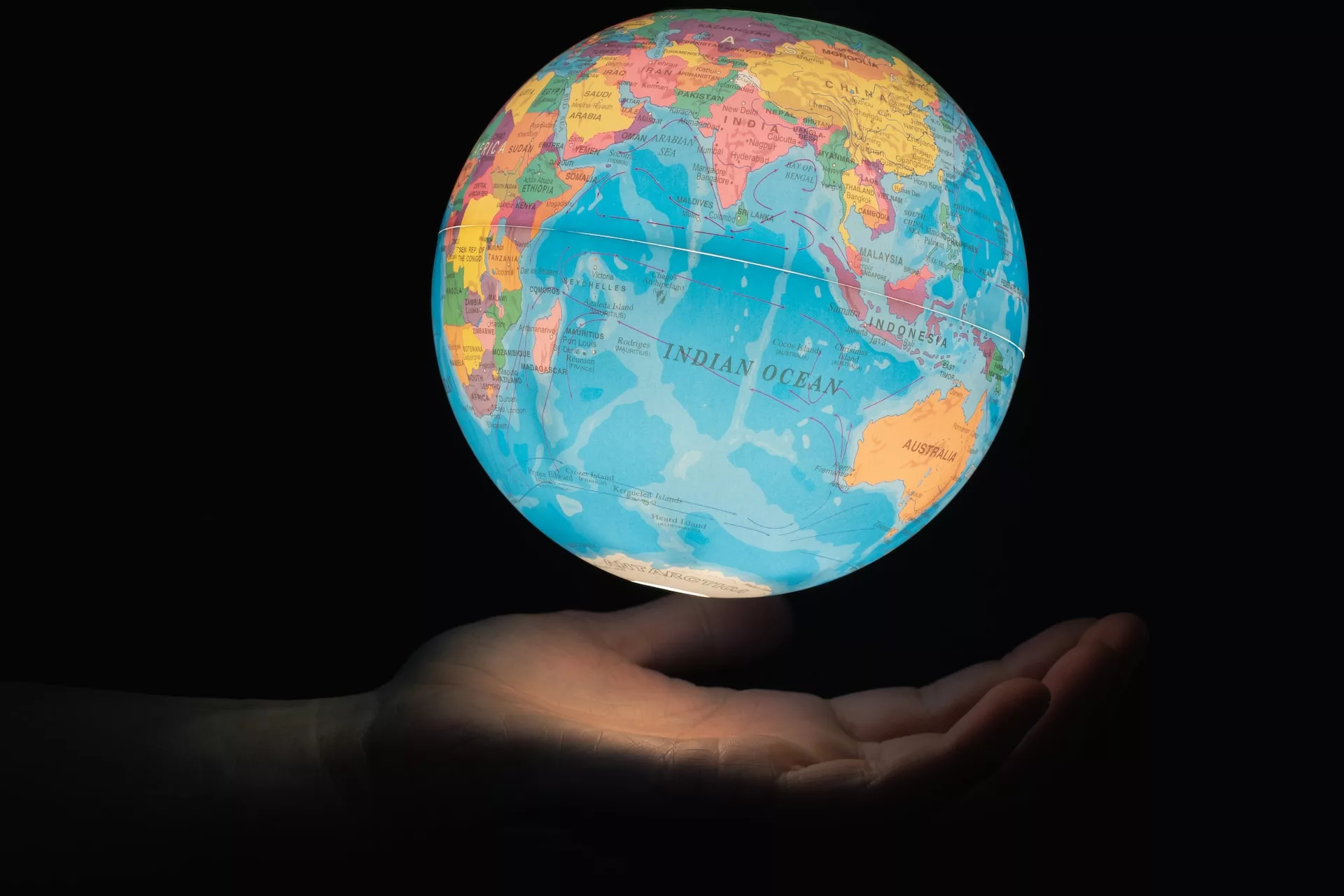Sea surface level is not constant—the Indian Ocean gravity hole is a remarkable example of this, and may be the result of low density plasma plumes. Photo credit: Greg Rosenke via Unsplash
An area of 3 million square kilometers, located 1100 miles off the coast of India, has a sea level that lies up to 100m below the global average. Here, a drop in the depth of the sea floor causes a drop in sea surface level. This is all down to a phenomenon called a gravity hole. Called the Indian Ocean Geoid Low (IOGL), very little has been known about this area and why it exists. However, in May 2023, scientists from the Indian Institute of Science in Bangalore published a paper outlining a possible cause for this mysterious gravity hole.
The force of gravity, that attracts objects to the centre of the Earth, is not uniform everywhere on the globe. The strength of gravity varies slightly depending on what lies below the Earth’s surface: in the crust, core, and mantle, and also depends on their density and mass. The geoid is simply a name for the Earth’s mean gravity surface, which is an imaginary surface lying at roughly ocean surface level where gravity is all the same strength. If the Earth was a perfect sphere, all made of the same material, then this surface would also be a perfect sphere. As the make-up of the planet’s interior changes, so does the strength of gravity. Where the pull of gravity is weaker, the geoid is lower.
The force of gravity, that attracts objects to the centre of the Earth, is not uniform everywhere on the globe.
There are many geoid lows that occur around the Earth, most of which can be explained by events such as plate tectonic movements and the formation of mountains and valleys. The origin of the IOGL, however, has been hotly debated with several hypotheses for its existence put forward since its discovery in 1948.
The IOGL is the Earth’s lowest geoid low (essentially, it’s the biggest gravity hole), caused by a lack of mass inside the Earth. Attempts have been made to explain this lack of gravity, which have raised issues in academic circles. These attempts mostly focus on the current state of this anomaly, overlooking its historical development. However, a recent study used computer simulated models to look at the geoid low and its surroundings over the past 140 million years. 19 computer models were run, each with slightly different parameters. Models that had a result resembling the geoid low today were then compared. The models that had this successful output all had one thing in common: low density plasma plumes.
The IOGL is the Earth’s lowest geoid low (essentially, it’s the biggest gravity hole), caused by a lack of mass inside the Earth.
These hot plumes have been caused by the destruction of an ancient ocean. 100 million years ago, India and Australia were both part of an ancient southern continent known as Gondwana that was beginning to break apart. As plate tectonics caused the continent to break up, an ocean formed in the middle of it known as the Tethys Ocean. Then, about 40 million years ago, India began to collide with Asia to form the Himalayas, which closed this new Tethys Ocean. When oceans close, their crust, which is denser than the crust of the continents (being made of a denser type of rock called basalt), is subducted (forced down) beneath the continents and brought down into the mantle. The remains of the Tethys Ocean are therefore now melting in the mantle somewhere below Eastern Africa. The subduction of this slab of ocean crust churned up some of the molten mantle and caused the hot plumes that now result in the geoid low.
Although there is yet to be any hard evidence of the existence of such plumes, this is a vital first step in explaining the presence of the IOGL, which could lead to better understanding of the geophysics of the Earth’s mantle. To confirm these predictions, more research and physical evidence will need to be compiled. That being said, the paper still signifies a breakthrough in research, and perhaps another step towards the eventual understanding of our planet’s biggest gravity hole.





